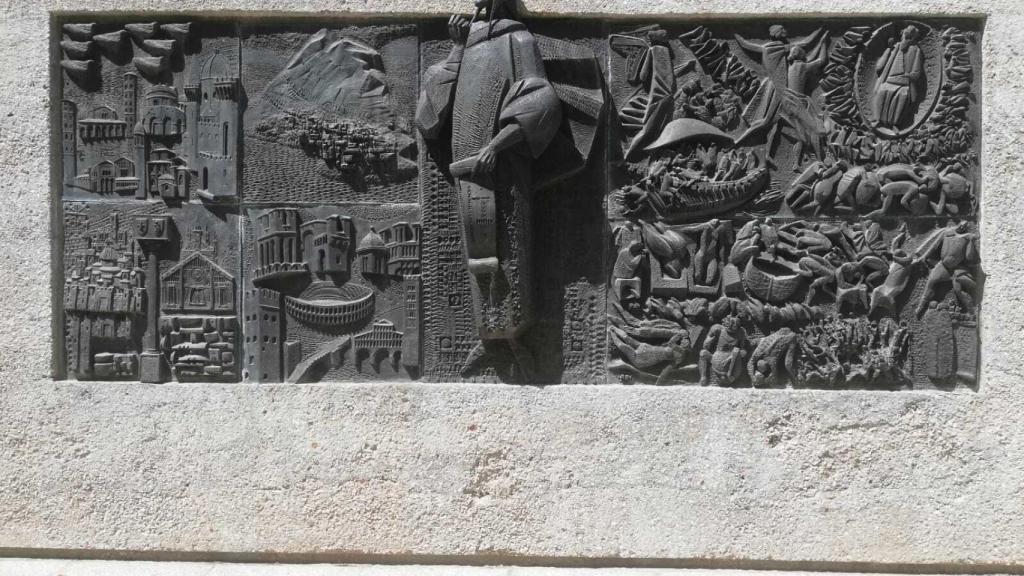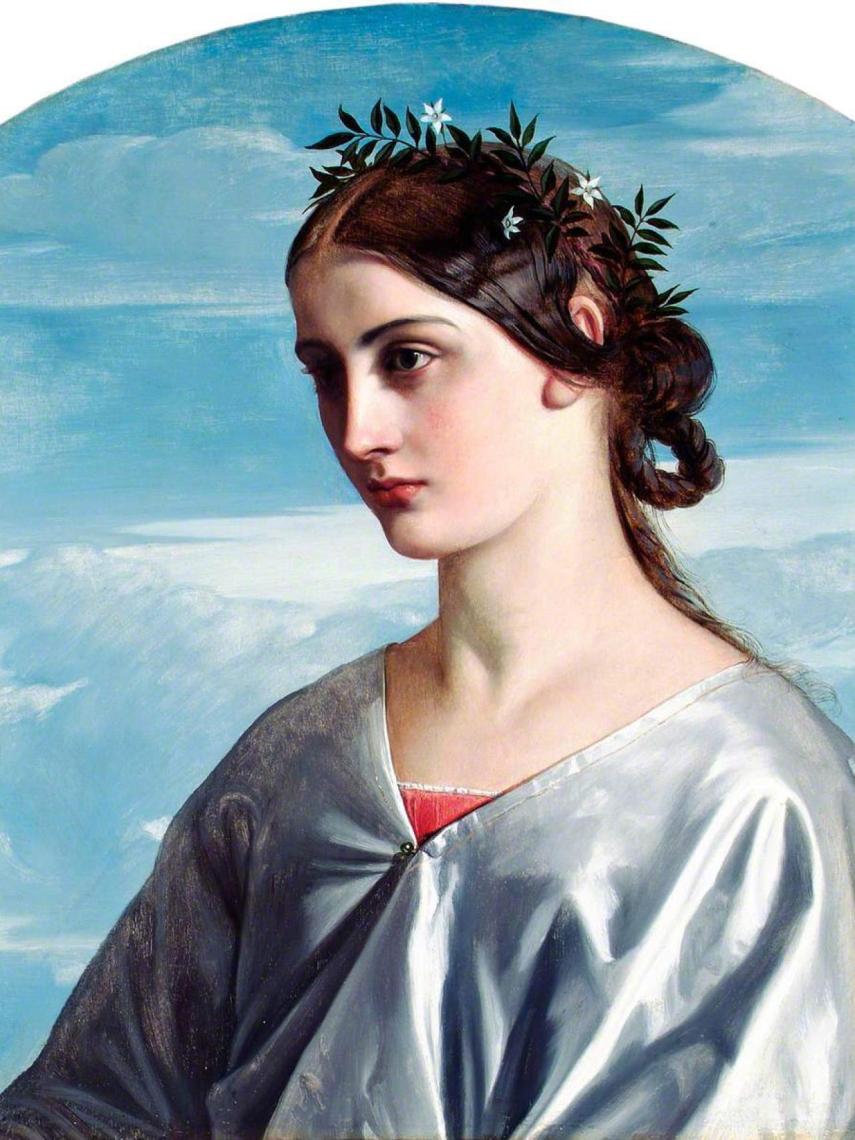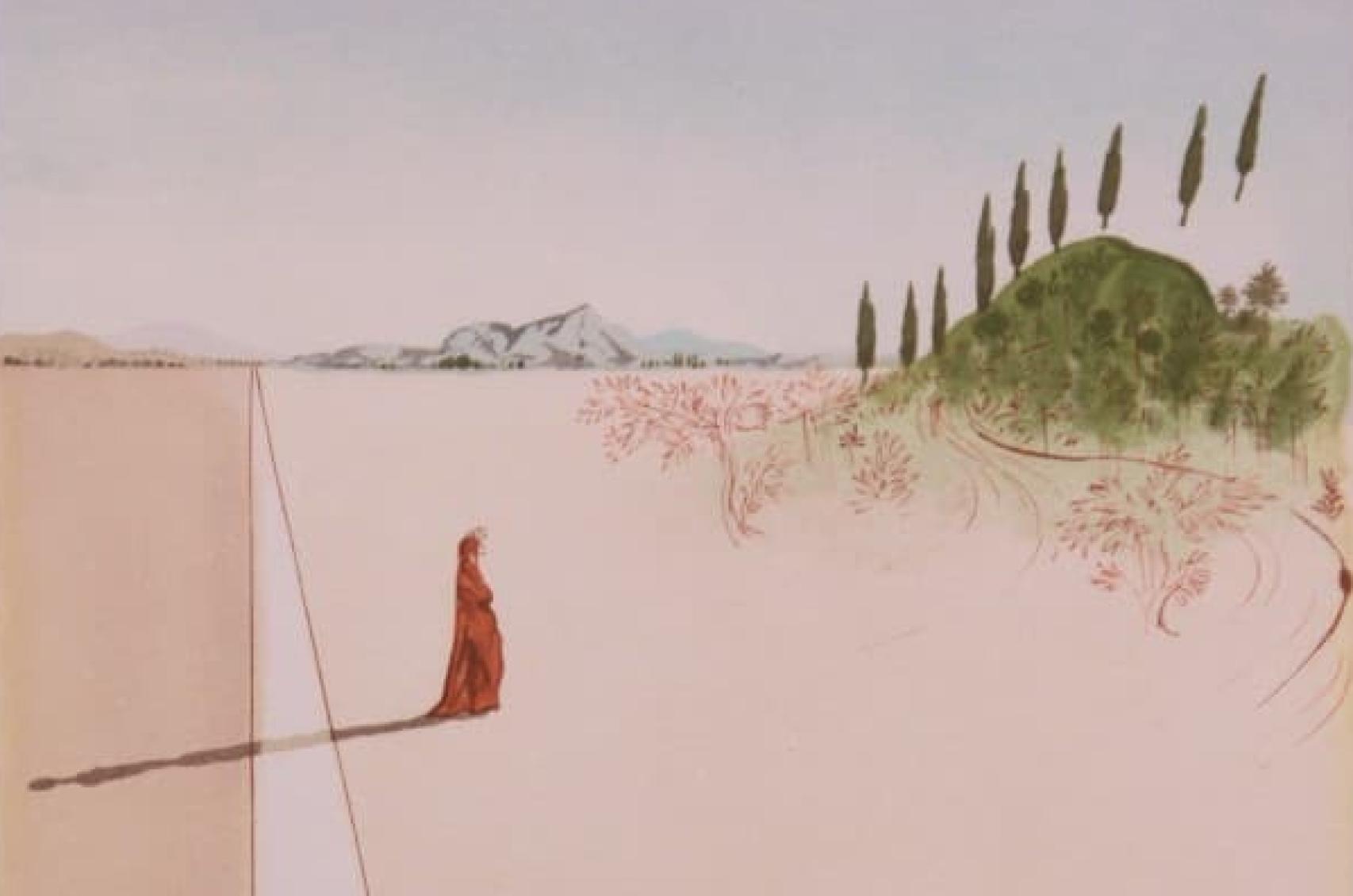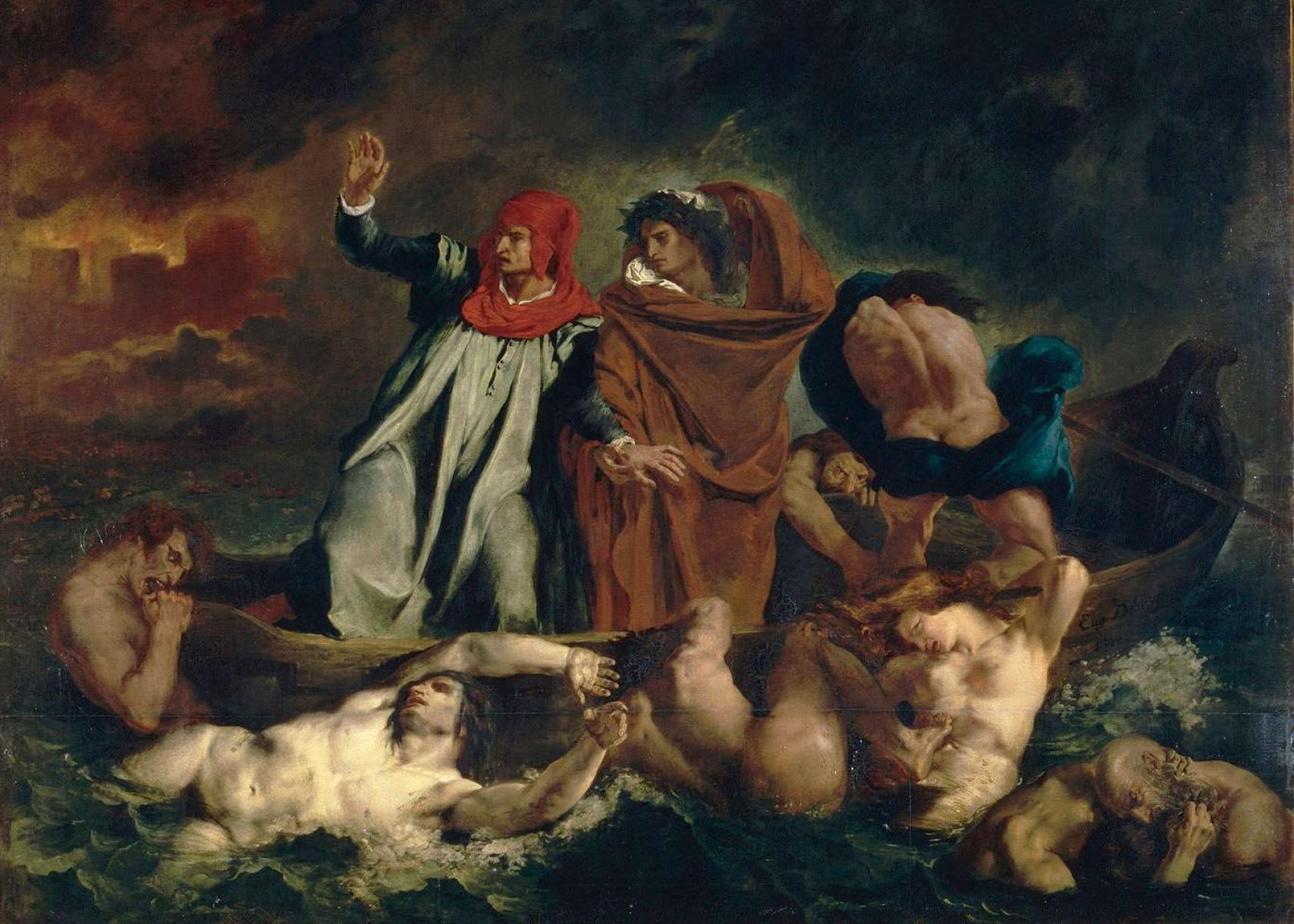What I didn’t know, at this point, is that Dante Alighieri (1265-1321) had a monument in Madrid, in the call, for more details, Puerta de Dante del Retiro, Menéndez Pelayo street (very) below, in the southernmost access of the enclosure. There I went, as a tourist, on the eve of the seventh centenary of the death (on the 13-14) of the eminent Florentine poet.
You pass the door, you climb some stairs and there it is, on a landing or terrace, a rectangular bronze mural, which they say is more than five meters wide and more than two meters high. It’s not just anything, no. In the center, the standing figure of the bard stands out. To our left, four important cities in their busy and dangerous lives are very synoptically represented: Florence, where he was born into a noble family, was enchanted as a child of Beatriz Portinari (his platonic beloved), he married Gemma di Donati, had her four children, wrote her New life (1294), he was a member of the Council of Hundred, his life was complicated as a very active member of the White Guelphs and for this he was condemned to the stake in 1302, from which he got rid by taking the path of exile; Venice, where he was on a diplomatic mission the last year of his life; Ravenna, where died of a bronchopulmonary infection at age 56 and where he is buried, and Siena, so cited in his great work as the scene of the disputes between Guelphs (black and white) and Ghibellines.
His great work is, of course, Comedy, according to the title of the last translation of Jose Maria Micó, formerly known universally as Divine Comedy. To our right -we continue in front of the monument-, different scenes from the great poem, Dante’s journey through Hell, Purgatory and Paradise are represented. Sculpture is not my strong suit, but I would say that this part of the monument is very powerful and colorful.
The monument to Dante in Madrid, at the Puerta de Dante del Retiro.
There is hardly any information about this Dantesque mural from Madrid, which was commissioned by Italian industrialists and made by the sculptor and ceramist Angelo Biancini, born in Ravenna precisely, an important artist and teacher in Italy, specializing in religious themes and with works in the Vatican Museums. The mural was placed in 1969, at the time of the mayoralty of Carlos Arias Navarro (Ahem!), And it has never been officially opened. Andrea Levy, you know, the occasion is painted bald.
In Spain there is another monument to Dante, a bust between two columns in the María Luisa Park in Seville. And it is that Seville is named in Comedy, like Lérida, Ceuta, Caleruega (Burgos) and Navarra: “… Oh, happy Navarra, / if it could hide behind its mountains!”. Navarrese know that William Shakespeare cited Navarra in Lost labor of love – “it will be the wonder of the world” – but I don’t know if they know this allusion from Dante.
Hell, Purgatory and Paradise
“Halfway through life, / I found myself lost in a dark forest / because I strayed from the right path …”. With these exact words, according to Micó’s translation, begins the memorable and well-known start of Comedy in the 2018 edition of Acantilado, which we can buy at the recently opened Madrid Book Fair. Except for error, the most widespread translation up to this time was that of the poet Angel Crespo, a specialist from whom Acantilado published Dante and his work (1999), a very accessible biographical and critical study that the same publisher, with a clear Dante vocation, ends up publishing Dante, a biography with a lot of narrative pulse of the Turin writer and medievalist Alessandro Barbero.
Beatriz Portinari portrayed by William Dyce.
Wikimedia Commons
Will we get used to calling Comedy just what we’ve always known as Divine Comedy? I see it difficult, if not impossible. But it seems that was its original title. He was the author of Decameron, the also Florentine Giovanni Boccaccio (1313-1375), author of the first biography of Dante —Published by Alianza—, who “divinized” the title of Comedy from his surrendered admiration for the text of his contemporary and thus remained from an edition of 1555.
Dante – that serious man, hooded, aquiline and dressed in red, as his countryman portrayed him Sandro Botticelli more than a century later— he wrote Comedy between 1307 and 1317, always in exile and between political troubles, escapes and complex missions in different cities far from Florence —and Beatriz, married in 1287 and died three years later—, under the protection of illustrious friends and supporters. He wrote it in parts – with interruptions – and in the order of the story (Hell, Purgatory, Paradise), and it was also disseminated in parts with great success in handwritten copies – more than eight hundred are dated – before its first printing in 1474. All this is recounted by Micó in his edition of Cliff.
Detail of a scene from ‘Divina comedia’ according to Dalí.
And it is that, today, this beautiful edition is the most recommended for those interested: it is, of course, bilingual (with the original text on each page below its corresponding in Spanish); Each of its one hundred songs is accompanied by a brief introductory epigraph that summarizes what is narrated below, clarifies its keys and meaning and helps magnificently to understand and follow the thread of events; brings at the end a chronology that synthesizes in almost twenty pages the life of Dante with sufficient detail; offers a great infographic (The Dantean universe) that visually draws and shows the places on the route through Hell, Purgatory and Paradise, marking their respective enclaves and naming the characteristics of their occupants and, finally, and in addition to two introductory texts on the work and the translation —which it suppresses the rhyme in consonant—, it closes with a formidable name-index in which the more than a thousand historical or fictional characters and places mentioned, briefly describing their identity and indicating in which specific part, song and verse they are cited.
“What is perfect there”
The poet confesses that his words will be “clumsy” to describe that “eternal” and “supreme” light that, at last, contemplates in Paradise, that the tongue is “short and weak” to explain that “… the good, which is the object of desire, / everything is enclosed in it, and outside of it / what is perfect there is incomplete “.
What began “midway through life”, in a “dark forest” —and also “wild, rough and arduous”, like our existence— ends for Dante, after being witness of many sufferings and hardships, before that light of Paradise that transforms him and makes him say his last words: “… but my will and my desire / they rotated with the power of love / that moves the sun and the other stars”. The end.
‘La barca de Dante’, by Eugène Delacroix.
Wikimedia Commons
Comedy It contains hundreds of historical, political, scientific, literary, artistic, theological, religious and mythological references. Few times has such a comprehensive and comprehensive work of fiction been written. Dante, of course, settles personal accounts, transmits his philias and phobias, offers his point of view along with the overturn of his immense culture and his sublime poetic sensitivity, materialized in more than 14,000 hendecasyllable verses, grouped in triplets and distributed in 100 songs developed in three identical parts of 33, except Hell which has 34.
Creator of extremely powerful images that excited the imagination of artists such as William Blake, Eugène Delacroix, Gustavo Doré, Augusto Rodin, Salvador Dali and so many others, ComedyWhat the hell, it is also, through the fantastic story of a hazardous and risky journey, an adventure story and a love story towards the encounter with happiness, the spirit, God and the best of oneself. The adventures are lived by Dante when he meets Virgilio, your “teacher”, and be guided by the author of Aeneid, who walks ahead, in their common journey (not without tension) through the horrors of the circles, enclosures, pockets and areas of Hell and through the cornices and landings of Purgatory where they will run into all kinds of sinners, famous or anonymous, suffering their corresponding, atrocious and flaming punishments. And, after finding his beloved Beatrice in Purgatory —Virgilio is not authorized to follow them because he is a pagan—, Dante will re-green his always longed for love for her and with her for the nine heavens of Paradise.
Because, deceased at the age of twenty-three, it was Beatriz, as is already revealed in Canto II, who, with her eyes “shining with tears”, went out to look for Virgilio in Limbo and asked him – “Well, if you help him you will give me consolation “- that he would go out to meet his” faithful friend “to lead him with her to Heaven:” Love brought me, love to speak makes me “.
Follow the topics that interest you
Reference-www.elespanol.com



